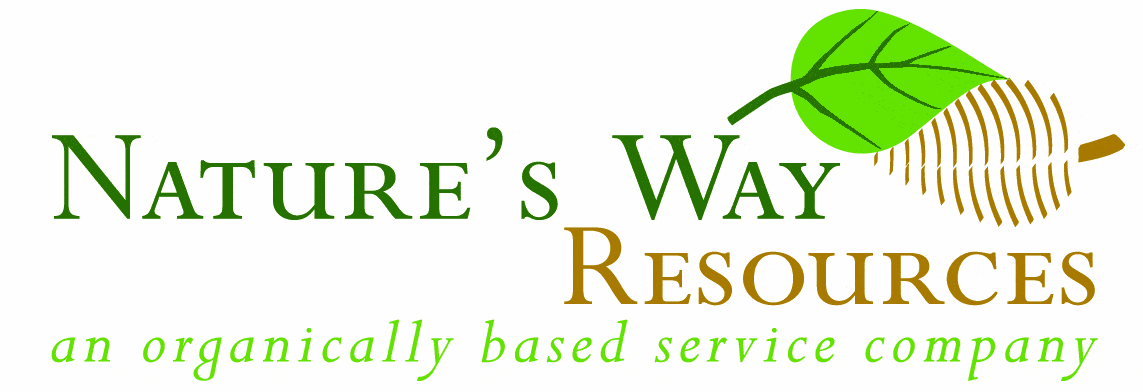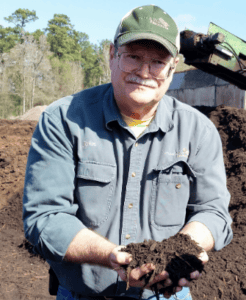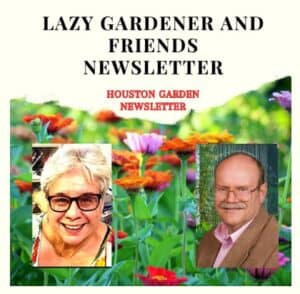 Nature’s Way Resources is proud to produce & email you this free weekly newsletter. We have no ads, but sponsors do graciously help support this project as a public service. Please note their names below & show your gratitude for this free service by patronizing their businesses! To become a sponsor, call (936) 273-1200
Nature’s Way Resources is proud to produce & email you this free weekly newsletter. We have no ads, but sponsors do graciously help support this project as a public service. Please note their names below & show your gratitude for this free service by patronizing their businesses! To become a sponsor, call (936) 273-1200
Nature’s Way Resources owner John Ferguson, “The Lazy Gardener” Brenda Beust Smith and Pablo Hernandez welcome your feedback and are so grateful to the many horticulturists who contribute their expertise
Click here to join our email list
CLICK HERE for PDFs OF PAST LG&F NEWSLETTERS
“If someone offers you advice on “Gardening in Texas,” run! They
obviously don’t understand (probably from another “smaller” state.
— Author unknown – but must know Texas!
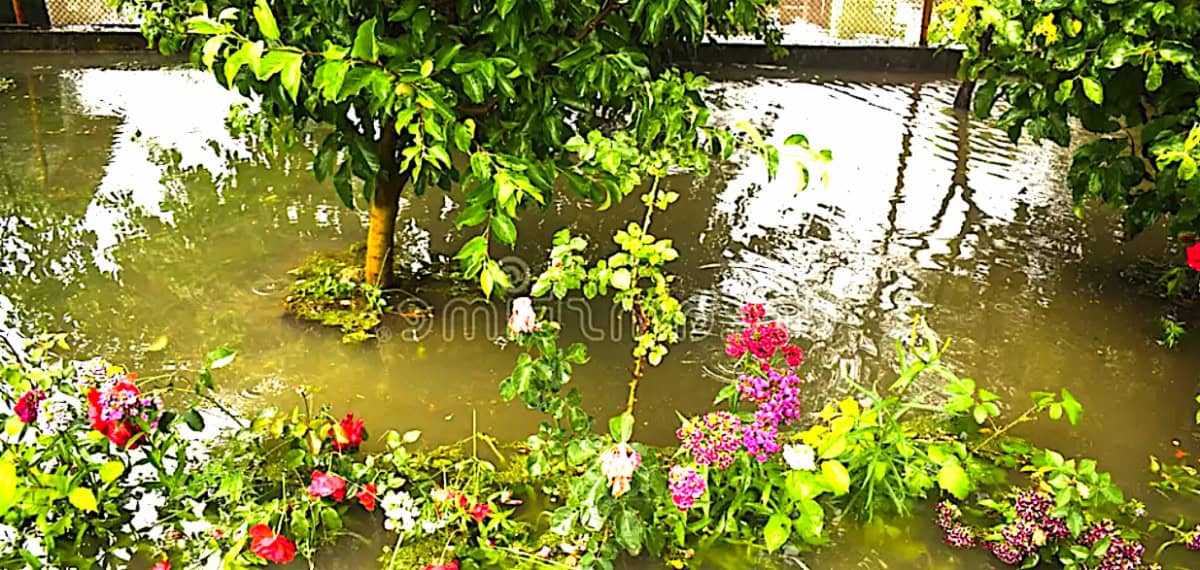
“Floods are ‘acts of God’; but
flood losses are largely acts of man”
— Chinese mythological tradition
That’s the news reported in a recent Houston Public Media article. Experts have been warning Houstonians for decades. I was assigned to do a Chronicle article on this very topic back in the ’70s. Signs are all around us, Broken concrete in driveways, sidewalks & streets. Indoor & outdoor doors won’t close anymore. Home foundations showing cracks and plants dying or looking sad in areas where previously thrived or, that die unexpectedly. They may have been more heat-tolerant when water table was higher.
Best advice I can share is a Rain (old name Bog) Garden ANITA NELSON designed quite a while ago for my Lazy Gardener’s Guide.* Principles same now, only need is a lot worse. Now, as back then, a rain garden may help. Rather than running off into streets, heavy rainfall seeps down deeper and faster than regular gardens allow.
Way back then, Anita Nelson, long time Nelson’s Water Gardens’ expert, designed this Rain (Bog) Garden below, with far more plants than most will use to give readers a wide variety of planting options. Most important, however, are placements she makes. (Sun/shade notations at top left & right)
(Note: this garden was designed long before the campaign against invasive plants
began. Please check texasinvasives.org/plant_database/ before you buy and plant!
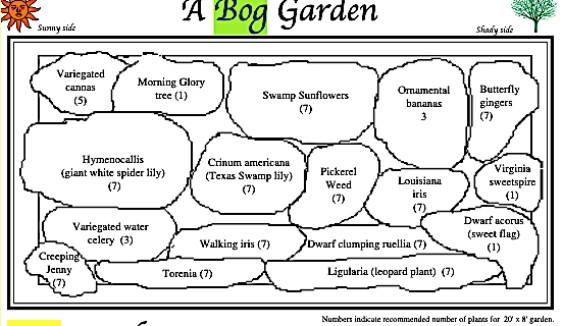
Bog Gardens . . .
 … are one of the best ideas to come along in a LONG time for Greater Houston area gardens. Wouldn’t it be wonderful to store, deep underground, all that rainfall that runs off your yard for use by your trees during summer droughts? Keeping soil moist helps prevent expensive subsidence damage and protect bayous and Galveston Bay from dangerous landscape chemicals in the runoff. It’s a win-win situation. A naturally low spot, where water stands or collects during a heavy rain is ideal. It is NOT a mosquito breeding ground because there is no standing water (except during rains). Rain water drains into the area from the rest of the yard (making adjacent beds healthier) and is absorbed by lower soil levels. You can go one of 2 routes:
… are one of the best ideas to come along in a LONG time for Greater Houston area gardens. Wouldn’t it be wonderful to store, deep underground, all that rainfall that runs off your yard for use by your trees during summer droughts? Keeping soil moist helps prevent expensive subsidence damage and protect bayous and Galveston Bay from dangerous landscape chemicals in the runoff. It’s a win-win situation. A naturally low spot, where water stands or collects during a heavy rain is ideal. It is NOT a mosquito breeding ground because there is no standing water (except during rains). Rain water drains into the area from the rest of the yard (making adjacent beds healthier) and is absorbed by lower soil levels. You can go one of 2 routes:
- Dig the area (if necessary) to make it 8-15″ below ground level. Fill half full with pea gravel and/ or rocks plus very coarse mulch. Plant into the mulch/rock level. The soil normally attached to nursery-grown plants will mix with this mulch layer, providing sufficient growing medium. Fill to top with leaves, pine needles and/or a very coarse mulch.
- (Lazy way) Plant right into the low spot. Fill with leaves, pine needles or a coarse mulch. These beds may have to be watered to get the plants started and during extreme drought periods. But the more mulch you use on top, the more moist the bottom will stay during the summer.
If you’re already in an extremely high or well drained area and simply want to grow boggy plants, use a liner. Dig as above. Line the bed with plastic. Fill and plant as described above. A lined bed holds water better during the dry periods but won’t help with subsidence or provide water to trees. Bog Gardens can be as sophisticated as you want or as simple as throwing bananas, cannas, crinums, elephant ears, LA iris or ruellia into a low area that takes forever to dry out after a rain. These root without planting and love this “difficult” situation.
In a bog garden, the center will be the most moist. Edges are less moist and a better area for experimenting with regular garden plants. Lobelia (cardinal flower) and creeping jenny often do better on a bog edge than they do in regular gardens. If you have a natural edge pond, consider expanding the sides to create a Bog Garden border!
This garden was designed with the help of Anita Nelson of Nelson Water Gardens with more plants than you will probably want. But this gives you a selection of very common ones that should be easier to find. Once established, this garden should be carefree. Unless, that is, some decide they like you TOO much and take over! There is a whole world out there of Gulf Coast-hardy “bog or swamp plants” that would also work in this yard.
NOTE: Elephant ears and ruellia are now labeled as very invasive.
* Full PDF “Lazy Gardeners Guide” free now. Email: lazygardenerbrenda@gmail.com
Thinking about your own yard
and gardens … want FREE advice?
Consider Bayou Preservation Association’s Resiliency At-Home Summer Workshop Series. This free, hands-on program will focus on nature-based solutions that benefit both neighborhoods and bayous.

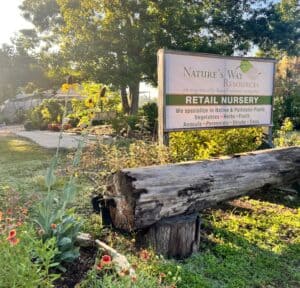 ATTN. GARDEN/PLANT GROUPS — Nature’s Way Resources offers free guided tours of NWR’s extensive nursery/soil/mulch facilities for garden clubs, plant societies and other plant-oriented, organized groups. As usual, NWR’s now-expanded meeting site is free to above groups. Reservations a must for both. Great time to visit!
ATTN. GARDEN/PLANT GROUPS — Nature’s Way Resources offers free guided tours of NWR’s extensive nursery/soil/mulch facilities for garden clubs, plant societies and other plant-oriented, organized groups. As usual, NWR’s now-expanded meeting site is free to above groups. Reservations a must for both. Great time to visit!
- SUBMITTING CALENDAR EVENTS?: For next upcoming newsletter, submit in exact format (see top of calendar below. Reformatting = delay)
John’s Corner
NEWS FROM THE WONDERFUL WORLD
OF SOIL AND PLANTS
Subject: food safety, foraging
We often talk about growing our own food from vegetables to fruits and berries as it is the best way to get nutrient dense high-quality food that tastes better. Another benefit is that it can be free of toxic chemicals like pesticides. One can also grow heirloom varieties that have much higher nutrient content.
America has become the sickest country on earth. This is caused by a combination of several factors, from chemical pollution in the environment, extremely poor food with very low nutrient density, to ultra processed food, to many foods being laced with toxic chemicals. The EPA, USDA, FDA, etc. have failed to protect society.
For example, from the 2025 Environmental Working Group study, it found that spinach has the highest number of pesticides on it. Agribusiness has taken something good and ruined it with all the chemicals.
The EWG publishes a list each year of the vegetables with the most pesticides on them and those with the least. The dirty dozen and the clean 15. The full lists can be found below.
https://www.ewg.org/foodnews/full-list.php
Sasha Rogelberg writes for Fortune Magazine:
“A Texas bill on the brink of becoming law would crack down on major food manufacturers, requiring them to label products with warnings about ingredients ‘not recommended for human consumption’ under the standards of countries other than the U.S.
Senate Bill 25 would require U.S. food manufacturers to, beginning in 2027, clearly mark products sold in Texas with warning labels that the foods contain certain ingredients like bleached flour and synthetic food dyes that other countries have prohibited or required warnings for. The legislation would impact major food manufacturers like General Mills, whose brands Pillsbury Toaster Strudel contain bleached flour, as well as PepsiCo, the conglomerate behind Doritos and Mountain Dew, which contain dyes.”
I received a e-mail tip from Bob Randall, PhD founder of Urban Harvest and Board member of OHBA. He mentioned that a type of French Chard known as “Perpetual Spinach” or (Erbette in French) grows here easily from seed if planted as transplants in November. When cooked it is the same flavor and texture as spinach (chard is a close relative) and lasts in shade to about July 1. Longevity spinach is another cooked green all summer long—it is perennial here in damp shade. Both are easy to grow without pesticides outside the back door. So, there is an easy alternative to the 50-pesticide diet.
A few years ago, I was able to participate in a class on foraging at a friend’s property a few miles away led by Mark “Merriwether” Vorderbruggen, PhD.
I was amazed at how many edible plants there were, and many of them tasted quite good. Many of these native plants our ancestors knew about are very nutritious and are easy to grow in our gardens.
They naturally tend to be insect and disease resistant, drought and heat tolerant, hence are easy to grow. In addition to being easy to grow many have beautiful flowers or great fall color.
Mark has a great book on the subject: FORAGING – Explore Nature’s Bounty and Turn Foraged Finds into Flavorful Feasts, by Mark “Merriwether” Vorderbruggen, PhD, 2022, Penguin Random House, ISBN: 978-0-74405-144-5
SPONSORSHIP
If you are interested in becoming a sponsor, please contact us at 936-273-1200 or send an e-mail to: lazygardenerandfriends@gmail.com
ABOUT US
BRENDA BEUST SMITH
WE KNOW HER BEST AS THE LAZY GARDENER . . .
but Brenda Beust Smith is also:
- a national award-winning writer & editor
- a nationally-published writer & photographer
- a national horticultural speaker
- a former Houston Chronicle reporter
When the Chronicle discontinued Brenda’s 45-year-old Lazy Gardener” print column — started in the early ’70s as a fun side-project to reporting, it then ranked as the longestrunning, continuously-published local newspaper column in the Greater Houston area. The name, she says, is not just fun, it’s true.
Brenda’s gradual sideways step from reporter into gardening writing led first to an 18-year series of when-to-do-what Lazy Gardener Calendars, then to her Lazy Gardener’s Guide book which morphed into her Lazy Gardener’s Guide on CD, which she now emails free upon request.
Brenda became a Harris County Master Gardener and, over the years, served on theboards of many Greater Houston area horticulture organizations. She hosted local radio and TV shows, most notably a 10+-year Lazy Gardener specialty shows on HoustonPBS (Ch. 8) and her call-in “EcoGardening” show on KPFT-FM.
For over three decades, Brenda served as Assistant Production Manager of the GARDEN CLUB OF AMERICA’S “BULLETIN” magazine. Although still an active broad-based freelance writer, Brenda’s main focus now is THE LAZY GARDENER & FRIENDS HOUSTON GARDEN NEWSLETTER with John Ferguson and Pablo Hernandez of Nature’s Way Resources.
A native of New Orleans and graduate of St. Agnes Academy and the University of Houston, Brenda lives in Humble, TX, and is married to the retired Aldine High School Coach Bill Smith. They have one son, Blake.
Regarding this newsletter, Brenda is the lead writer, originator of it and the daily inspiration for it. We so appreciate the way she has made gardening such a fun way to celebrate life together for such a long time.
About her column, Brenda says: “I don’t consider myself a ‘garden writer.” I started out 50+ years ago as a very lazy “gardening reporter.” I still feel that way today. I hope my columns inspire/help newcomers, but I do not write to them. I write to very experienced gardeners who want to expand their horizons.
JOHN FERGUSON
John is a native Houstonian and has over 35 years of business experience. He owns Nature’s Way Resources, a composting company that specializes in high quality compost, mulch, and soil mixes. He holds a MS degree in Physics and Geology and is a licensed Soil Scientist in Texas.
John has won many awards in horticulture and environmental issues. For years he represented the composting industry on the Houston-Galveston Area Council for solid waste. His personal garden has been featured in several horticultural books and “Better Homes and Gardens” magazine. His business has been recognized in the Wall Street Journal for the quality and value of their products. He is a member of the Physics Honor Society and many other professional societies. John is the co-author of the book Organic Management for the Professional.
For this newsletter, John contributes articles regularly and is responsible for publishing it.
PABLO HERNANDEZ Pablo Hernandez is the special projects coordinator for Nature’s Way Resources. His realm of responsibilities include: serving as a webmaster, IT support, technical problem solving/troubleshooting, metrics management and quality control. Pablo helps this newsletter happen from a technical support standpoint.
Download the Newsletter with Our Events Calendar Below!
